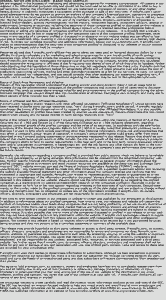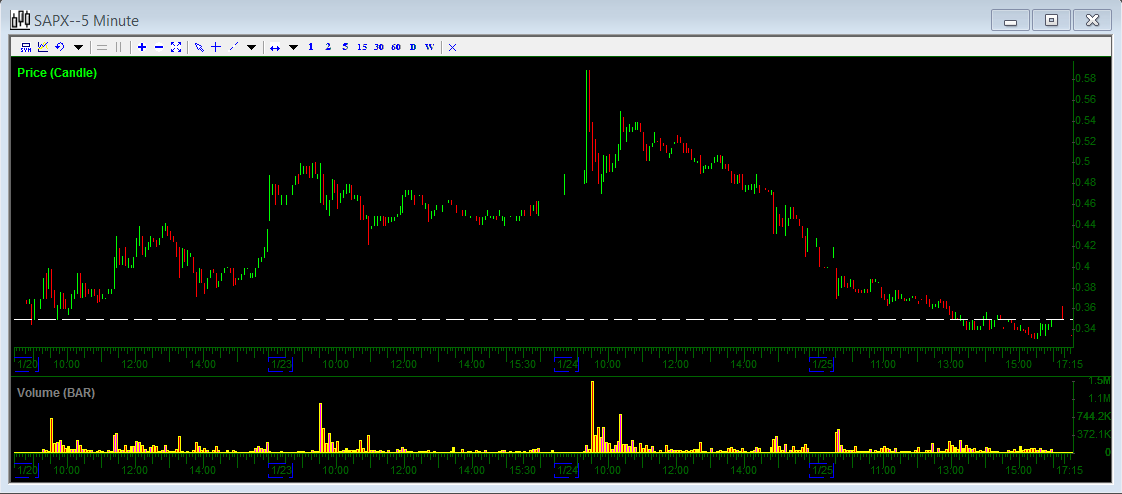See the embedded video for a quick summary of the major tax issues for traders and what business trader status means. Obviously I am not a CPA and I have no formal accounting training. Please see JK Lasser’s Your Income Tax 2012 and Robert Green’s Tax Guide for Traders. If you want to really get hard-core, see the relevant IRS publications:
IRS Publication 550
(the portion of this that relates to business traders as opposed to investors is excerpted below the video)
Please note that futures contracts are treated differently and I do not address that in the video.
Here is the relevant portion of IRS Publication 550 on business traders:
Special Rules for Traders in Securities
Special rules apply if you are a trader in securities in the business of buying and selling securities for your own account. To be engaged in business as a trader in securities, you must meet all the following conditions.
- You must seek to profit from daily market movements in the prices of securities and not from dividends, interest, or capital appreciation.
- Your activity must be substantial.
- You must carry on the activity with continuity and regularity.
The following facts and circumstances should be considered in determining if your activity is a securities trading business.
- Typical holding periods for securities bought and sold.
- The frequency and dollar amount of your trades during the year.
- The extent to which you pursue the activity to produce income for a livelihood.
- The amount of time you devote to the activity.
If your trading activities do not meet the above definition of a business, you are considered an investor, and not a trader. It does not matter whether you call yourself a trader or a “day trader.”
Note.
You may be a trader in some securities and have other securities you hold for investment. The special rules discussed here do not apply to the securities held for investment. You must keep detailed records to distinguish the securities. The securities held for investment must be identified as such in your records on the day you got them (for example, by holding them in a separate brokerage account).
How To Report
Transactions from trading activities result in capital gains and losses and must be reported on Form 8949 and Schedule D (Form 1040), as appropriate. Losses from these transactions are subject to the limit on capital losses explained earlier in this chapter.
Mark-to-market election made. If you made the mark-to-market election, you should report all gains and losses from trading as ordinary gains and losses in Part II of Form 4797, instead of as capital gains and losses on Form 8949 and Schedule D. In that case, securities held at the end of the year in your business as a trader are marked to market by treating them as if they were sold (and reacquired) for fair market value on the last business day of the year. But do not mark to market any securities you held for investment. Report sales from those securities on Form 8949 and Schedule D, as appropriate, not Form 4797. See the 2011 Instructions for Schedule D.
Expenses. Interest expense and other investment expenses that an investor would deduct on Schedule A (Form 1040) are deducted by a trader on Schedule C (Form 1040), Profit or Loss From Business, if the expenses are from the trading business. Commissions and other costs of acquiring or disposing of securities are not deductible but must be used to figure gain or loss. The limit on investment interest expense, which applies to investors, does not apply to interest paid or incurred in a trading business.
Self-employment tax. Gains and losses from selling securities as a trader are not subject to self-employment tax. This is true whether the election is made or not. For an exception that applies to section 1256 contracts, see Self-Employment Income earlier under Section 1256 Contracts Marked to Market.
How To Make the Mark-to-Market Election
To make the mark-to-market election for 2012, you must file a statement by April 17, 2012. This statement should be attached to either your 2011 individual income tax return or a request for an extension of time to file that return. The statement must include the following information.
- That you are making an election under section 475(f) of the Internal Revenue Code.
- The first tax year for which the election is effective.
- The trade or business for which you are making the election.
If you are not required to file a 2011 income tax return, you make the election by placing the above statement in your books and records no later than March 15, 2012. Attach a copy of the statement to your 2012 return.
If your method of accounting for 2011 is inconsistent with the mark-to-market election, you must change your method of accounting for securities under Revenue Procedure 2011-14 (or its successor) available at www.irs.gov/irb/2011-04_IRB/ar08.html. Revenue Procedure 2011-14 requires you to file Form 3115, Application for Change in Accounting Method. Follow its instructions. Enter “64” on line 1a of the Form 3115.
Once you make the election, it will apply to 2012 and all later tax years, unless you get permission from the IRS to revoke it. The effect of making the election is described under Mark-to-market election made, earlier.
For more information on this election, see Revenue Procedure 99-17, on page 52 of Internal Revenue Bulletin 1999-7 at
www.irs.gov/pub/irs-irbs/irb99-07.pdf.
Disclaimer: I AM NOT A CPA OR TAX EXPERT! What I say above may be wrong. Please consult your CPA or tax lawyer for tax advice. I use Green’s accounting firm to prepare my taxes. The links for the above books are using my Amazon.com affiliate link. This blog has a terms of use that is incorporated by reference into this post; you can find all my disclaimers and disclosures there as well..



